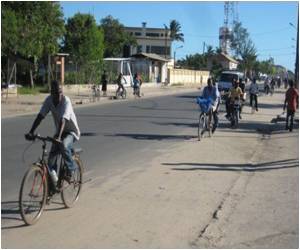
The study, published in PLOS Medicine, analysed physical activity and health information collected from almost 4,000 participants in the Indian Migration Study.
It found that 68.3 per cent of people in rural areas bicycled and 11.9 per cent walked to work, compared with 15.9 per cent cycling and 12.5 per cent walking in towns and cities.
Half of people who travelled to work by private transport and 38 per cent who took public transport were overweight, compared with only a quarter of people who walked or cycled to work. The study found similar patterns for rates of high blood pressure and diabetes.
"This study highlights that walking and cycling to work is not only good for the environment but also good for personal health," said Dr Christopher Millett, of the School of Public Health at Imperial and the Public Health Foundation of India, who led the study. "People can get the exercise they need by building physical activity into their travel to work, so they don't need to make extra time for the gym."
"Getting more people to use active modes of travel should be integral to strategies to maintain healthy weight and prevent diabetes and heart disease in India. This should include improving the safety and convenience of walking and bicycling in Indian towns and cities, and also greater investment in public transport, since this travel generally involves walking to bus or train stops."
Advertisement
Source-Eurekalert














